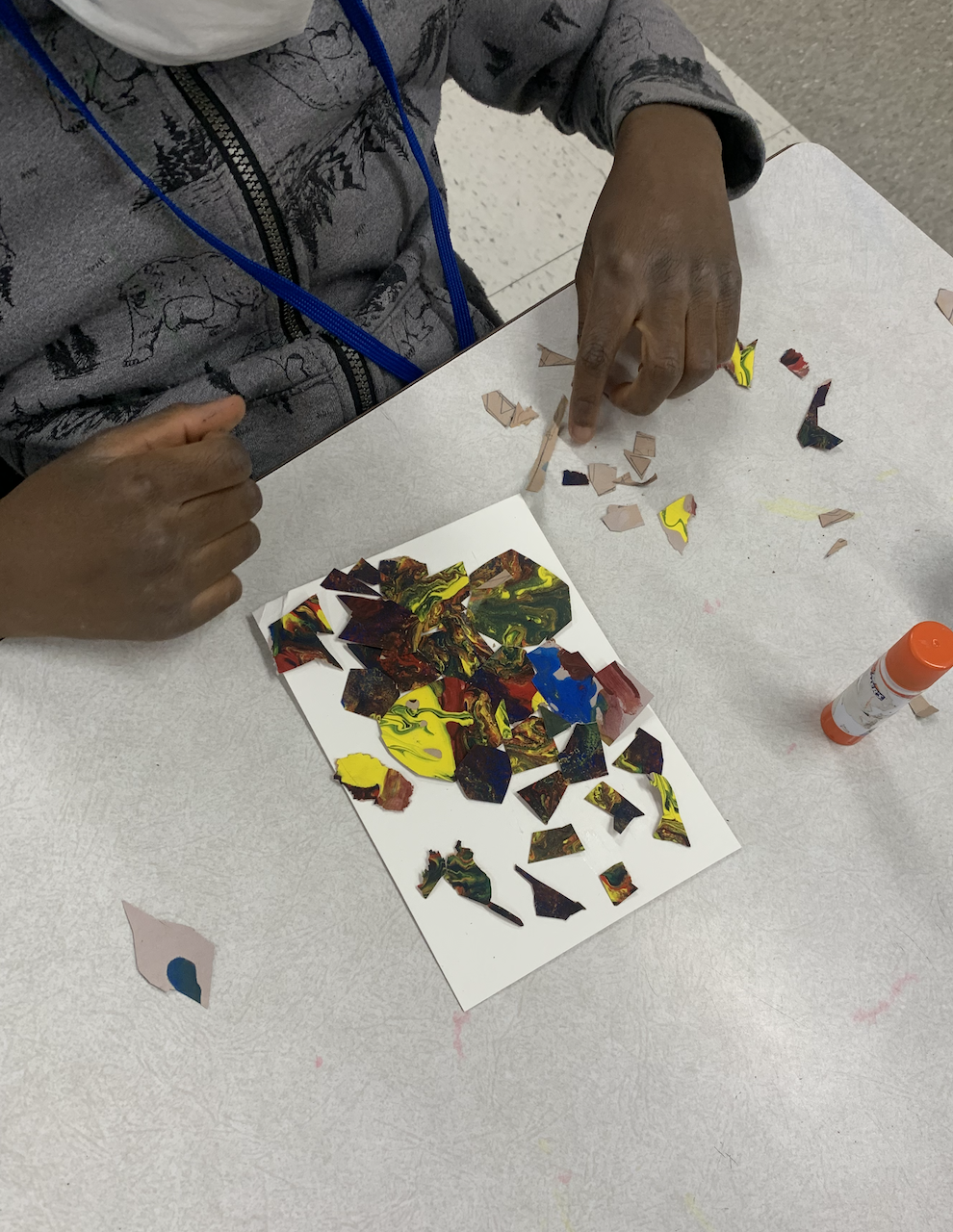Planning Backwards Model
Name of Project: PART 2/3: Paint Collages Inspired by Jack Whitten
Teacher: Lula McConnell
Age or Grade Level: Prepared for 3rd grade
Visual Arts Content / Standards
MN Arts Standard 3501.0820
Subpart 1a - Foundations:
The student will use foundational knowledge and skills while responding to, creating, and presenting artistic work.
Subpart 5b - Connect:
The student will understand that artistic works influence and are influenced by personal, societal, cultural, and historical contexts, including the contributions of Minnesota American Indian tribes and communities.
National Core Arts Standard:
Relate artistic ideas and works with societal, cultural and historical context to deepen understanding.
Overview of Project
This will be the second part of a 3-part lesson series on the life and work of renowned painter Jack Whitten. We will explore his involvement in the Civil Rights movement of the 1960s*, his work as an artist in New York City, and his famous break from traditional painting techniques to collage work using hardened paint.
This week, in Lesson 2, I will present a shorter slideshow to students to refresh their knowledge about Jack Whitten’s life and work. I will use questions about what we remember from last week to recap important points: What is abstraction? Who is Jack Whitten? Why do artists use abstraction? How did Jack Whitten paint? We will study geometric shapes by naming them and observing them within Whitten’s painting 9-11-01 (2006). We will talk about tessellations to introduce the geometric term.
We will use geometric templates to trace shapes onto the back of our painted pages from last week. We will then cut them out and collage them with glue sticks to make tessellations on small canvases.
“Big Ideas”/ EssentialQuestion(s)
How can small shapes make up a big picture? Why do we look for smaller shapes?
What emotions do we feel when seeing and making political work?
What is abstraction? Why do we use it?
Student Outcome Objectives
Students will:
1. Observe how Jack Whitten uses small geometric shapes to create large organic forms
2. Create work in the style of Jack Whitten
3. Learn rudimentary geometry terms
Prior Knowledge
Students have previously learned about figure drawing by combining simple shapes to draw more complex forms. This is an important foundational drawing skill, and will help them understand how to observe a large work with the intention of finding smaller shapes within it.
Students recently were taught about the Civil Rights movement of the 1960s, and learned about Jack Whitten’s life and work in the context of his experiences in the segregated South.
Students learned about how Jack Whitten paints in a unique style, by pouring paint, breaking it up into dried chips, and then collaging them together.
Students learned about what abstraction is and why artists use it to express strong emotions.
Examples of Artwork
I have attached my slideshow here: with images for this week
Assessment
Notice shapes the children have used and ask “what is the name of this shape?” to gauge whether they responded to the geometry portion of the lesson. Ask questions about feelings and wandering thoughts while working. Ask if they see any images in their abstract work because of the way they have combined the shapes.
Materials
Paint pours from last week
Sturdy watercolor paper
Glue sticks
Scissors
Teacher Reflection
Provide glue sticks/strong liquid glue and brushes if possible. We used the glue sticks each kid had in their desk. Some worked well and others peeled off the next day. I ended up spending an hour gluing lost pieces back onto their canvases, use strong glue to avoid this :)



